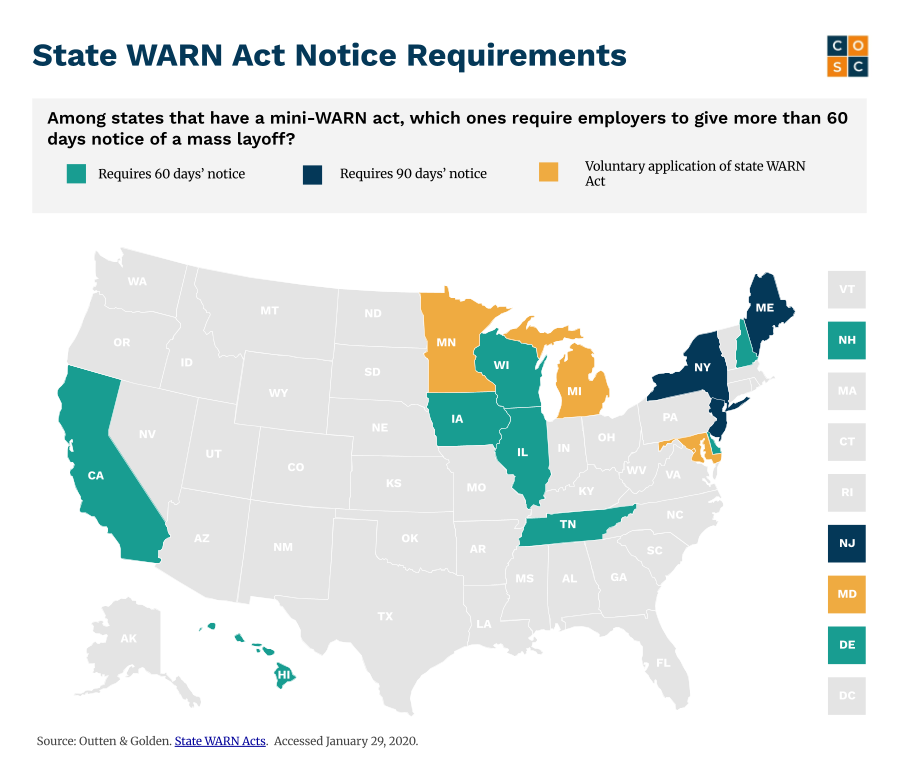State WARN Acts
Federal WARN Act
Originally enacted in 1988, the federal Worker Adjustment and Retraining Notification Act (or WARN Act) requires all employers with 100 of more employees to provide at least 60 calendar days’ notice when laying off 50 or more employees at a single location. Employers can be exempt from the WARN Act when layoffs are due to: unforeseeable business circumstances that are outside the firms control, a natural disaster, or in the case of a faltering company seeking new capital to remain in business.
State Action
Since the federal WARN Act was enacted, thirteen states have enacted their own version of the law (commonly referred to as state WARN Acts or “mini -WARN” Acts) that set restrictions for mass layoffs that go beyond the federal law. New Jersey joins Maine and New York as the only states to require 90 days’ notice for terminating a large number of employees.

In 2008, New York became the first state to enact a mini-WARN Act with a 90 days’ notice requirement for employers. New York’s law applies to any private business with 50 or more employees whose layoffs affect 25 or more employees. Nearly eleven years later, Maine became the second state to mandate that employers give 90 calendar days’ notice in the case of mass layoffs.
Most state WARN acts, however, were enacted to extend the notice requirement to include smaller businesses. California and Illinois each require businesses with 75 or more employees to be subject to layoff notice requirements while Hawaii and Wisconsin include businesses with 50 or more employees. Iowa’s WARN act applies to businesses with 25 or more employees, but only requires that those businesses give 30 days’ notice of an upcoming layoff. And in states like Maryland, Michigan, and Minnesota, companies are encouraged—rather than required—to give notice under state law of an upcoming mass layoff.
Research & Resources
Chamber Resources
|